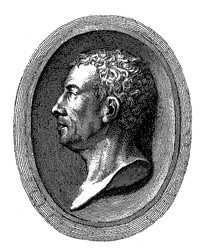In den langgestreckten, schmalen henkellosen Gefäßen bewahrte man mit Duftstoffen versetzte Öle auf. Man trug das unten abgerundete Gefäß an einem Band, das unter der abgeflachten Mündung befestigt war, da der Gefäßkörper fließend in den nur wenig abgesetzten Hals übergeht
Das Alabastron gehört zu dem weit verbreiteten und in der Form nur wenig variierenden langlebigen Typ der aus Alabaster gefertigten Gefäße ohne Hängebossen. Es wir um 150-100 v. Chr. zu datieren sein.
en

